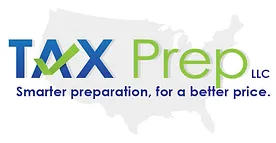If you are self-employed, it’s really important that you fully understand your responsibilities when it comes to paying taxes. Here are some tips that can help you stay on track and out of any disputes with state and federal tax officials.
Income Taxes
As a sole proprietor, you are not required to file a separate income tax return for the business. However, you must summarize your business income and expenses on Schedule C of your personal income tax return.
It’s important that you keep full and accurate records of your income and expenses. Deducting all of your ordinary and necessary business expenses helps minimize your tax liability. Any losses your business has are generally deductible against your other income, subject to special rules relating to hobby losses, passive activity losses, and activities for which you were not “at risk.”
Self-Employment Taxes
As a self-employed person, you must pay both shares of FICA (Social Security and Medicare) taxes, though these are partially deductible. The rates are as follows for 2025:
- Social Security — 12.4% of the first $176,100 of net self-employment earnings
- Medicare — 2.9% of all net self-employment earnings*
The maximum 15.3% self-employed tax rate applies to the first $176,100 of self-employed income in 2025.
Estimated Tax Payments
Your net self-employment income will be taxable whether or not you withdraw cash from your business account. In addition, it’s likely that you’ll face penalties if you don’t make appropriate quarterly estimated tax payments.
The Deductibility of a Home Office
If you work out of a home office, you may be able to deduct a portion of the costs that you spend to maintain your home as well as any commuting expenses that you may have incurred while traveling from your home office to another work location.
Health Insurance Premiums
Once you meet the tax law requirements, you can deduct up to 100% of your health insurance premiums as a trade or business expense. That includes premiums paid for your spouse, dependents, and children under age 27.
Retirement Savings
As a sole proprietor, you can establish a retirement plan. Solo 401(k) plans and simplified employee pension (SEP) plans are popular among the self-employed. Your contributions to these and other types of retirement plans are tax deductible within certain limits.
Talk to us, let’s see how we can help you manage your taxes. Together, we can ensure that you are on top of your tax obligations and that you are maximizing the tax opportunities that are available to you as a self-employed business owner.



